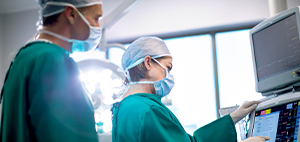From our humble beginnings as a small summer cottage, to our impact today as a regional hospital offering world-class care, we’re proud of our history. We hope you enjoy our story — which begins in 1906 on a “Breezy Knoll.”
Our History
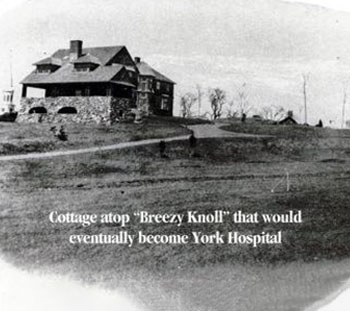
1906–1958
York Hospital began as a summer cottage built high upon “Breezy Knoll” in York Village. Early incorporators purchased the land for $15,000 and opened the hospital’s doors on July 22, 1906. It was a 10-room hospital, and the first patients were those diagnosed with typhoid fever, epilepsy, rheumatism and delirium, with surgical cases including appendectomies, fracture care, carcinoma, endometriosis and hysterectomy. The first President of the Board was Seabury W. Allen.
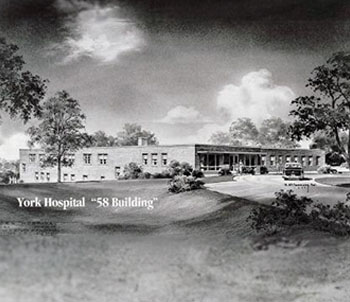
1959–1961
The cottage remained as the hospital’s main building for 50 years before the Board of Trustees, led by Roy Sturtevant, embarked on a fundraising campaign to erect a new, modern facility to care for patients. A modern, two-story building (dubbed the ’58 Building) was built on the hospital property for $400,000 and opened April 12, 1959. This brand-new, state-of-the-art hospital provided private, semi-private, and four-bed rooms (32 beds in total), along with six bassinets and two nurseries on the upper floor for inpatient care. Surgery, emergency, lab and x-ray, and supportive hospital services such as dietary, supplies, housekeeping, etc., were housed on the lower level.
While the old cottage hospital was demolished, the ’58 Building still stands today, though it has been added onto and modified several times to be the York Hospital we all know and love. The original ’58 Building is the current Hancock Wing’s upper and lower floors.
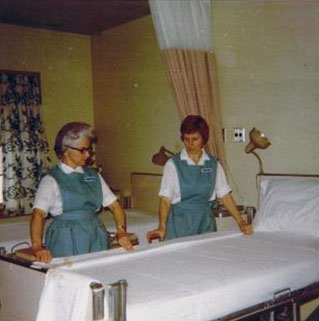
1962–1964
A year after opening the ‘58 Building, the hospital saw its occupancy rate increase from 66% to 85%, surgeries grew 130%, x-rays grew by 80%, and lab testing needs went up 125%. The hospital was quickly running out of room.
In 1962, a three-story addition was completed on the south wing of the building (on the Barrell Mill Pond side) that included space to increase the bed count to 41, a solarium with an exterior balcony, more offices, a nursing station, a conference room, a pharmacy, and additional space to expand medical records, the lab, and central sterile supply. This addition currently houses breast care on the second level, lab reception area on the main level, and IT equipment storage on the lower level.
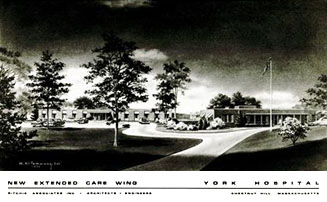
1965–1978
A two-story north wing addition took place in 1965 to add space for the expanding laboratory, the x-ray, a new outpatient waiting room, and more office space. It went through additional renovations over time and currently houses the laboratory, CT scan, and cath lab on the lower level, and the Ellis Conference Room, administration, and cardiovascular care on the second level. The next major addition happened in 1968 when extended care services were added. An entire new wing of the hospital was constructed and attached to the ’58 Building via a corridor.
The 40-bed extended care wing (called the Henry Strater Wing) was dedicated on May 25, 1969. Along with brand-new patient rooms, the project added a new kitchen and dining room, a beauty parlor, a fireplace, and the hospital’s first color television. Extended care services remained in the wing until 2008, when the skilled nursing service was transitioned to Durgin Pines Nursing Home in Kittery. The wing is currently home to inpatient rooms.
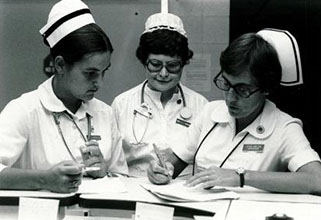
1979–1984
By the late 1970s, the hospital was providing services for 68 acute care beds and 18 skilled nursing beds in a space that was designed for a 46-bed hospital. The community was growing, and pressure to expand was mounting again. The board and leadership looked at many alternatives but in 1979 decided to construct a new wing to solve the space issue. Regulatory issues and CON reviews delayed the project, but the hospital pressed on. Its $4.4 million expansion, known as the Cameron Biewend Wing, opened in June 1983. It was built toward the northwest corner of the building and provided the hospital with its new entrance on Lindsay Road.
The expansion provided new space for many services to move into – including the emergency department (with an ambulance entrance), a new outpatient area, radiology, a five-bed special care unit, a new lobby and admitting on the ground floor, and new semi-private and private inpatient rooms on the second floor to replace the former 41-bed acute care wing in the ’58 Building. The space in the ’58 Building that was vacated was then renovated and turned into physical therapy, additional lab space, cardiology, medical records, a medical library, office space, and a solarium.
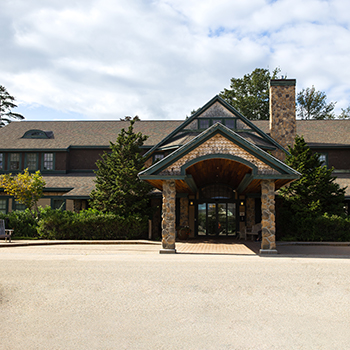
1985–1998
Things remained quiet for a while as staff and patients became accustomed to the new space. But something was brewing! By 1985, the surgical services at the hospital had grown well beyond its space. Now 30 years old, the center needed more space than the two operating rooms could handle, and plans for another addition emerged. In 1992, the Baldwin Family Surgery Center opened in the basement of the new Biewend Wing (after relocating the supplies that had been there to a new location) and building a 4,000-square-foot addition. The new surgery center had its own entrance, an additional OR (bringing the total to three), and provided expanded surgical capabilities, special procedures, and oncology care.
The hospital did not stop there. Many services and programs have been added. Most significant changes have occurred in the communities around us. The Heart Health Institute opened in Newington, New Hampshire in 1993 (and moved to York in 2002), and York Hospital began bringing services closer to home by building facilities in the surrounding communities.
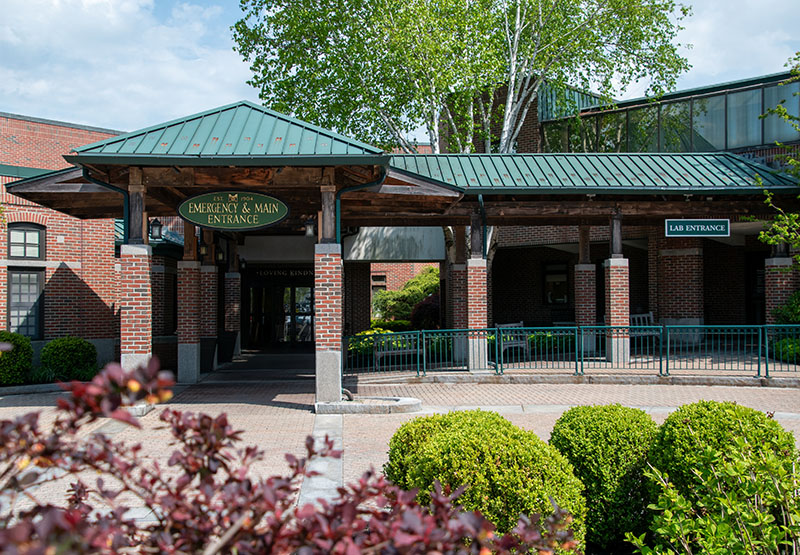
1999–Today
The first Wells location was built in 1999, housing an urgent care center and several ancillary services and physician practices. The success of this site led to many others — including York Hospital in South Berwick (2004); York Hospital in Berwick (2007); and a presence in Kittery that began with select services (2008), but eventually led to the building of York Hospital in Kittery (2012). The last major renovation/addition to occur on the hospital’s main campus was an addition to the surgery center — which added two additional operating rooms, expanded the pre- and post-op space, and provided a private recovery area — was completed in two phases (2010 and 2011).
Today, York Hospital includes the main hospital building (with all of its additions and changes), along with dozens of community sites and physician practices to care for all of your health care needs. We will continue to adapt and grow, as the health care world continues to evolve.




